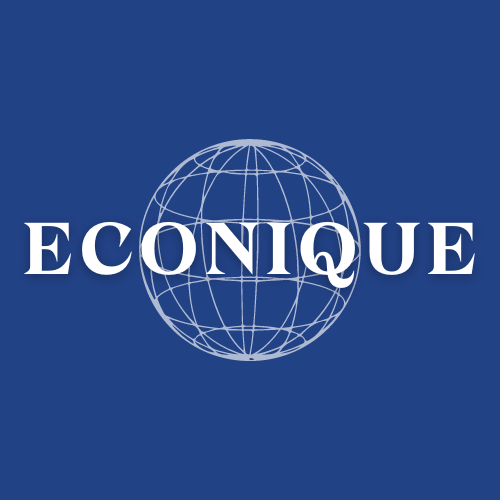Anuar Abdrazakov | 14.10.2025
The Past and the Future of Kazakhstan’s Business.

Kazakhstan has transformed from a command economy to the most competitive market in Central Asia over the past three decades. Modern skyscrapers have changed the skylines of its major cities, foreign stores are everywhere, and a new class of local business entrepreneurs are developing the country. Although these are visible indicators of progress, the country must address fundamental problems in the financial and business sectors to attain a genuinely relevant and competitive economic position.
Following independence in 1991, the shift to a market-based system was challenging, marked by high inflation, job losses, and economic instability. Gradually, through policies that promoted private ownership and investments, a commercial sector started to appear.
The private sector now generates around 50% of the nation's GDP. Small and medium-sized (SMEs) businesses, from restaurants and retail shops to IT startups and construction companies, now form the backbone of the nation’s economy. The government has introduced programs like the Business Roadmap 2025, which provide funding, training, and tax support, intending to help small and upcoming businesses. As of mid-2025, Kazakhstan has about 2.31 million SMEs. The goal is to increase the share of SMEs in the country’s GDP.
Nevertheless, even with these developments, the business environment still falls short of its potential. Bureaucracy, restricted loan availability, and unfair competition from big state-owned businesses continue to be problems for many entrepreneurs.
The financial industry has also evolved significantly from the instability of the 1990s, when banking crises were common and trust in the system was low. Today, the National Bank of Kazakhstan plays a crucial part in ensuring economic stability. But there are still vulnerabilities in the financial and banking sectors. With an IMF technical note highlighting that while the Astana International Financial Centre (AIFC) has established regulatory frameworks and infrastructure to serve global finance, its activity volume is still rather small, in fact, too small to even seriously affect Kazakhstan’s overall financial system if something were to go wrong.
By providing tax and legal benefits to draw in foreign businesses, the AIFC aims to serve as a centre for capital markets, green finance, and even Islamic finance. However, there are legal issues and consistency issues when the international framework of the AIFC is separated from Kazakhstan’s local financial sector.
A recurring limitation in Kazakhstan’s private sector is credit availability. Due to their perception of SMEs as high-risk, many banks restrict financing to smaller businesses. In certain areas of the industry, high non-performing loan ratios are a result of previous overexpansion and inadequate risk management
New action has been taken to lessen this. For instance, the Damu Fund structure will be used to finance major projects (more than 7 billion tenge ~ $13 million) and help SMEs through two new guarantee funds. Up to 85% of loans for key projects are subsidised by the Damu Fund under the Business Road Map and Economy of Simple Things, with final rates occasionally as low as 6%. More than 31,000 projects totalling more than 1 trillion tenge were given discounted funding in the first half of the previous year.
Kazakhstan has historically depended on foreign investment, particularly in the mining and energy sectors. However, it now seeks to draw in financial services and technology investment. That is one of the reasons the AIFC was established; it provides a common-law setting, tax breaks, and a more investor-friendly system.
However, the AIFC is currently small in comparison to other significant financial centres, despite its potential. Also, integrating deals conducted under the AIFC with the domestic regulatory and legal framework is a persistent policy challenge.
According to the empirical studies, Kazakhstan draws both market and resource-seeking investments, rather than purely labour-seeking ones, when it comes to foreign direct investments. This implies that its endowments and potential markets are valued by investors.
Strong institutions are essential for finance and business growth. But corruption is still a major problem. With a score of 39/100 on the 2024 Corruption Perception Index, Kazakhstan is ranked around 88th out of 180 nations. According to estimates, illegal activities cost the nation billions of dollars in income every year.
Legal uncertainty, agency power overlap, and judicial delays are other common development barriers mentioned by the private sector.
Although they have been included in the diversification plan, Special Economic Zones (SEZs) have had varying degrees of success. According to a policy brief, only 3.1 tenge in private investment was drawn for every tenge spent by the state, with a large portion of that coming from quasi-state enterprises. Full potential is hampered by issues with governance, ineffective management, and a lack of cooperation.
Following independence in 1991, the shift to a market-based system was challenging, marked by high inflation, job losses, and economic instability. Gradually, through policies that promoted private ownership and investments, a commercial sector started to appear.
The private sector now generates around 50% of the nation's GDP. Small and medium-sized (SMEs) businesses, from restaurants and retail shops to IT startups and construction companies, now form the backbone of the nation’s economy. The government has introduced programs like the Business Roadmap 2025, which provide funding, training, and tax support, intending to help small and upcoming businesses. As of mid-2025, Kazakhstan has about 2.31 million SMEs. The goal is to increase the share of SMEs in the country’s GDP.
Nevertheless, even with these developments, the business environment still falls short of its potential. Bureaucracy, restricted loan availability, and unfair competition from big state-owned businesses continue to be problems for many entrepreneurs.
The financial industry has also evolved significantly from the instability of the 1990s, when banking crises were common and trust in the system was low. Today, the National Bank of Kazakhstan plays a crucial part in ensuring economic stability. But there are still vulnerabilities in the financial and banking sectors. With an IMF technical note highlighting that while the Astana International Financial Centre (AIFC) has established regulatory frameworks and infrastructure to serve global finance, its activity volume is still rather small, in fact, too small to even seriously affect Kazakhstan’s overall financial system if something were to go wrong.
By providing tax and legal benefits to draw in foreign businesses, the AIFC aims to serve as a centre for capital markets, green finance, and even Islamic finance. However, there are legal issues and consistency issues when the international framework of the AIFC is separated from Kazakhstan’s local financial sector.
A recurring limitation in Kazakhstan’s private sector is credit availability. Due to their perception of SMEs as high-risk, many banks restrict financing to smaller businesses. In certain areas of the industry, high non-performing loan ratios are a result of previous overexpansion and inadequate risk management
New action has been taken to lessen this. For instance, the Damu Fund structure will be used to finance major projects (more than 7 billion tenge ~ $13 million) and help SMEs through two new guarantee funds. Up to 85% of loans for key projects are subsidised by the Damu Fund under the Business Road Map and Economy of Simple Things, with final rates occasionally as low as 6%. More than 31,000 projects totalling more than 1 trillion tenge were given discounted funding in the first half of the previous year.
Kazakhstan has historically depended on foreign investment, particularly in the mining and energy sectors. However, it now seeks to draw in financial services and technology investment. That is one of the reasons the AIFC was established; it provides a common-law setting, tax breaks, and a more investor-friendly system.
However, the AIFC is currently small in comparison to other significant financial centres, despite its potential. Also, integrating deals conducted under the AIFC with the domestic regulatory and legal framework is a persistent policy challenge.
According to the empirical studies, Kazakhstan draws both market and resource-seeking investments, rather than purely labour-seeking ones, when it comes to foreign direct investments. This implies that its endowments and potential markets are valued by investors.
Strong institutions are essential for finance and business growth. But corruption is still a major problem. With a score of 39/100 on the 2024 Corruption Perception Index, Kazakhstan is ranked around 88th out of 180 nations. According to estimates, illegal activities cost the nation billions of dollars in income every year.
Legal uncertainty, agency power overlap, and judicial delays are other common development barriers mentioned by the private sector.
Although they have been included in the diversification plan, Special Economic Zones (SEZs) have had varying degrees of success. According to a policy brief, only 3.1 tenge in private investment was drawn for every tenge spent by the state, with a large portion of that coming from quasi-state enterprises. Full potential is hampered by issues with governance, ineffective management, and a lack of cooperation.


